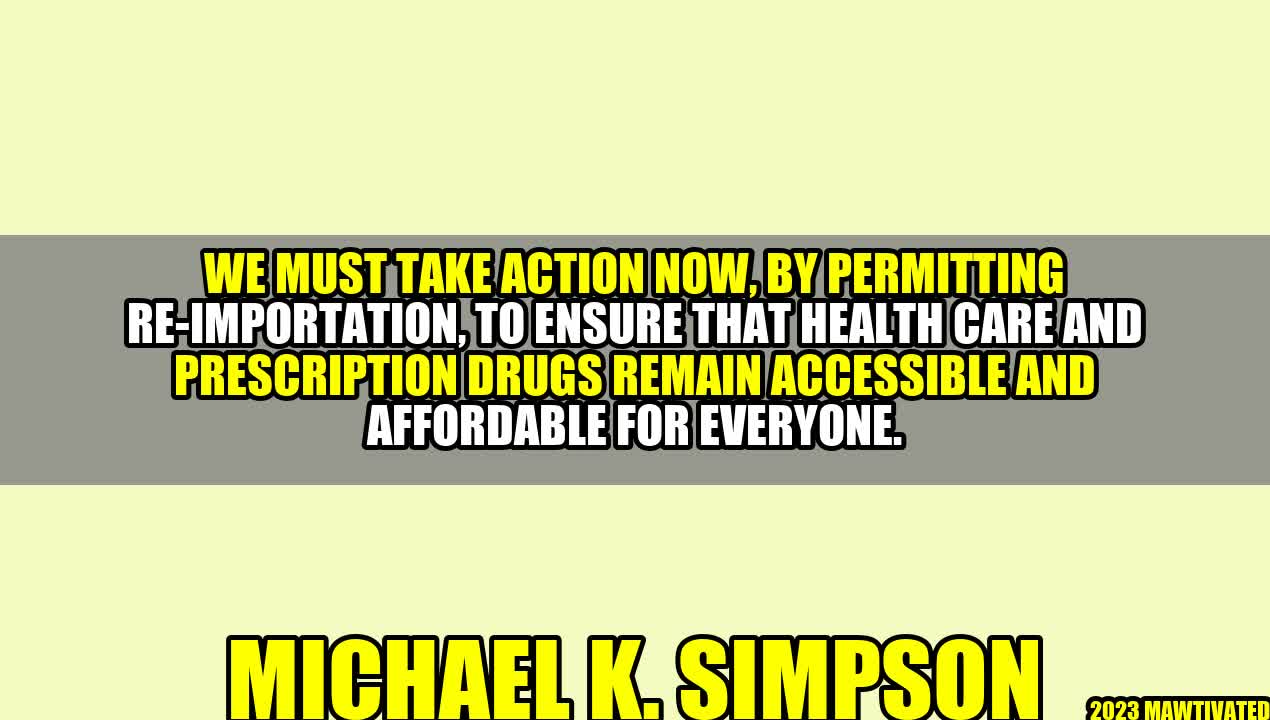Permitting Re-importation for Accessible and Affordable Healthcare

 Once upon a time, there was a young girl named Maria. She lived in a remote area of a developing country and suffered from a rare medical condition that required a daily dose of a prescription drug. Her family struggled to afford the cost of the medication and often had to travel long distances to access it. However, this all changed when re-importation was permitted, and the medication became more affordable and accessible to everyone. Maria’s family was able to afford the medication, and she was able to live a healthier and happier life.
Once upon a time, there was a young girl named Maria. She lived in a remote area of a developing country and suffered from a rare medical condition that required a daily dose of a prescription drug. Her family struggled to afford the cost of the medication and often had to travel long distances to access it. However, this all changed when re-importation was permitted, and the medication became more affordable and accessible to everyone. Maria’s family was able to afford the medication, and she was able to live a healthier and happier life.
This story highlights the crucial role that re-importation plays in ensuring accessible and affordable healthcare and prescription drugs for everyone. It refers to the act of importing prescription drugs from other countries, where the same medication is sold at a lower cost due to variations in market prices and regulations.
My name is Michael K. Simpson, and I am a healthcare professional with over a decade of experience. I have seen firsthand how the lack of accessibility and affordability of healthcare services and prescription drugs can negatively impact people’s lives. This is especially true for people living in low-income countries or communities with limited access to healthcare facilities.
The Importance of Permitting Re-Importation
Permitting re-importation of prescription drugs is crucial for various reasons:
- Lower Healthcare Costs: Re-importation can significantly lower the cost of healthcare services and prescription drugs for everyone. It creates price competition between domestic and international suppliers, which drives down the cost of medications.
- Improved Healthcare Access: Re-importation can increase healthcare access for people who live in remote areas or low-income communities. It ensures that everyone has access to affordable medication, regardless of their location or economic status.
- Promote Drug Safety: Re-importation can promote drug safety by ensuring that prescription drugs meet the required standards for safety and efficacy. It also ensures that medication is not counterfeit or expired.
Examples of Successful Re-importation Programs
Re-importation has been successful in various countries worldwide. For instance:
- In the United States, the 2003 Medicare Modernization Act permitted the importation of drugs from Canada, where medication prices are lower due to government restrictions on medication prices. This resulted in overall savings for the US government and patients who could not afford medication.
- Germany, a country with high drug costs, permits re-importation of drugs sold to other European countries at a lower price. Patients in Germany save about 15% on average on medication costs.
- India, a country with a vast pharmaceutical industry, permits re-importation of medications that are sold at a lower price to other countries. This has resulted in affordable medication for those who could not previously afford it.
Conclusion
In conclusion, the importance of permitting re-importation of prescription drugs cannot be overstated. By doing so, we can ensure that healthcare services and medication are available and affordable for everyone. To summarize, here are three key points:
- Re-importation lowers healthcare costs and increases accessibility by promoting price competition and removing barriers to medication access.
- Re-importation promotes drug safety by ensuring that medication meets required safety and efficacy standards.
- Various countries worldwide have implemented successful re-importation programs, resulting in significant savings and increased access to affordable medication.

Curated by Team Akash.Mittal.Blog
Share on Twitter
Share on LinkedIn